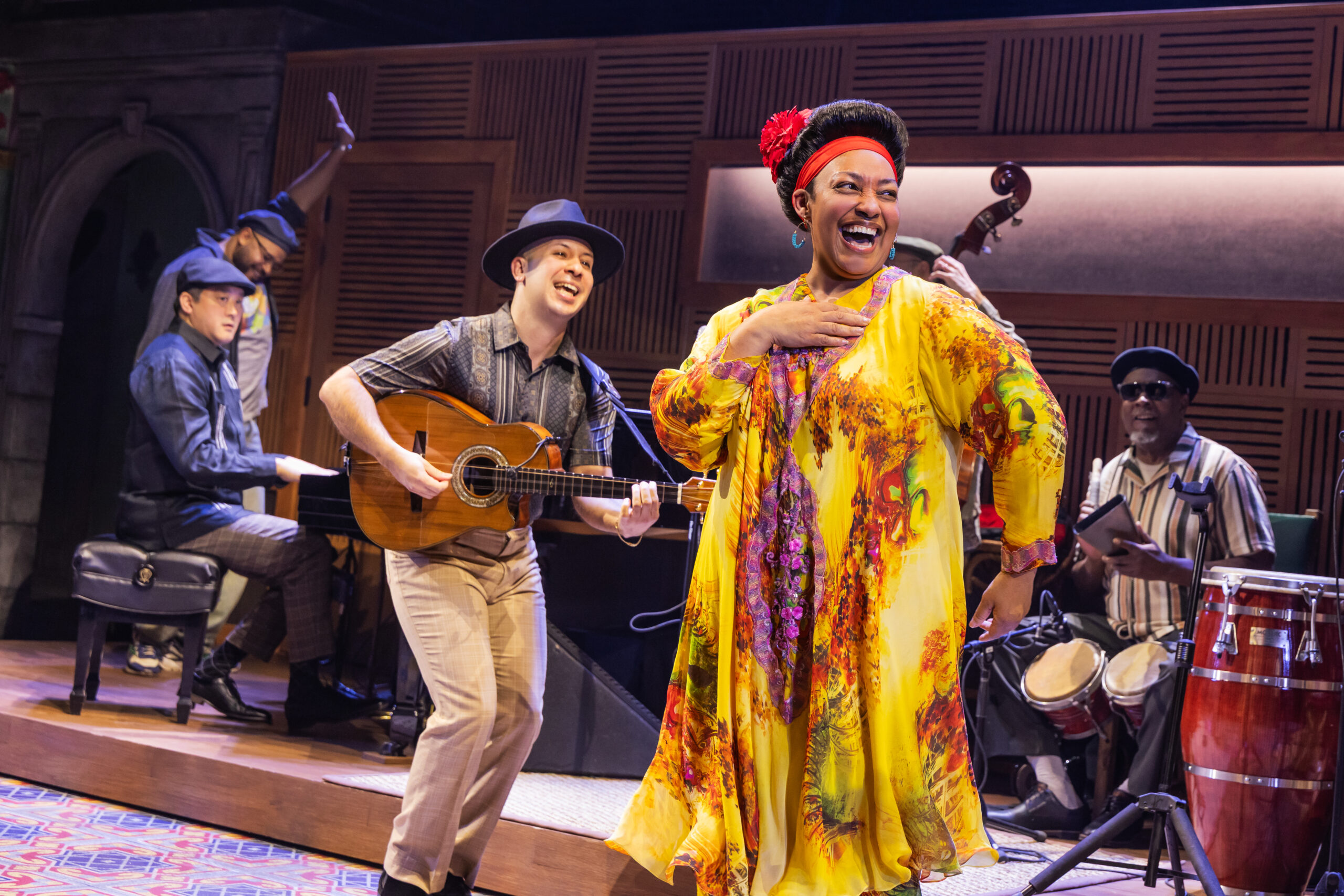Vidarte 2002 Festival Presentation
Vidarte 2002 Festival Presentation
Let me open with the following image: In 1965, a wrecking ball was about to hit a row of beautiful brownstone mansions on Park Avenue in Manhattan to make way for condominiums.
The Founding of The Americas Society
Let me open with the following image: In 1965, a wrecking ball was about to hit a row of beautiful brownstone mansions on Park Avenue in Manhattan to make way for condominiums. The Marquesa de Cuevas saw this sight and literally stopped the wreckers from demolishing the buildings; in fact, she bought all three of the buildings. She then donated the corner one to her cousin, David Rockefeller, who founded the Center for Inter-American Relations, an organization which was to be dedicated to promoting awareness in the U.S. about the societies and cultures of our Western Hemisphere neighbors. Known since the mid-80s as The Americas Society, this organization addresses its mission through public programs, publications, exhibitions and concerts; it carries out its activities through its Cultural Affairs division—consisting of departments of Literature, Visual Arts, and Music—and its Western Hemisphere division, which addresses public policy and investment issues. Highlights through the years have included the first solo show by Colombian artist Fernando Botero, a reception for the great Argentine writer Jorge Luis Borges, a recent appearance by tenor Plácido Domingo, and a dinner to honor President Vicente Fox.
The Society’s Department of Literature
In discussing the Society’s Department of Literature, the word I’d like to use is “Boom.” Many of you are aware of the “Boom” in Latin American literature, an explosion of writing in the 1960s and 70s by writers throughout the continent including Julio Cortázar, José Donoso, Carlos Fuentes, Gabriel García Márquez and Mario Vargas Llosa. The Americas Society is largely responsible for introducing the work of the Boom writers and many others to readers in the United States, from the time of the organization’s inception to the present day.
How has it done this? First, through public programs including poetry and fiction readings, lectures, symposia, and book presentations. Second, through publication of Review: Latin American Literature and Arts magazine, founded in 1968, and celebrated since that time as the major U.S. forum for Latin American writing in English translation. Review has received major accolades including the Phoenix Award for Outstanding Editorial Achievement and numerous first-prize design awards from the Association of American Museums. (There are copies of Review available for all those interested after the program.) Third, the organization has played a major role in the promotion and dissemination of Latin American literature through a translation program active from the 1960s through the mid-1980s which provided subventions for the translation of more than 80 classics of Latin American writing, most notably Gabriel García Márquez’s One Hundred Years of Solitude, translated by Gregory Rabassa. Let me add here that this introduction of Latin American writing in English helped pave the way for the promotion of the other Latin American arts in the United States.
The list of writers presented and published by the Americas Society is long and illustrious, including such luminaries as Jorge Amado, Jorge Luis Borges, Alejo Carpentier, Silvina Ocampo, Nélida Piñon and Manuel Puig. And of course, we’ve featured numerous writers representing this country—in addition to Carlos Fuentes, whom I’ve already mentioned, we’ve had the pleasure of hosting Julieta Campos, Carlos Monsiváis, Octavio Paz, Elena Poniatowska, and many other Mexican writers. The Paz event celebrated the republication of the author’s book-length poem Blanco; it was a great honor to present him at the Americas Society, considering his receipt of the Nobel Prize for Literature several years earlier. The Poniatowska program was a landmark one in that it celebrated the first translation of the author’s masterwork, Hasta no verte, Jesús mío, 32 years after the book first appeared in Spanish.
The Society’s Department of Literature collaborates with many organizations locally, nationally and internationally—with universities such as Columbia University, The City College of New York, and New York University; with publishers such as Penguin and Farrar, Straus Giroux; as well as with other cultural institutions, diplomatic bodies, and corporations. We have received funds from sources such as the National Endowment for the Arts, the Rockefeller Foundation, American Express, and of course, from generous individuals.
Present and Future Activities
With respect to the Department of Literature’s present activities and the new directions it plans, various images come to mind—Fuentes’s “smoking mirror,” Paz’s “Tree Within,” a painting by Frida Kahlo which portrays the artist sinking roots from her body into the earth. Through our current activites—the publication of Review magazine each spring and fall (the seasons of planting and harvest), the presentation of programs, and through new educational initiatives, we seek to reflect the multiple identities of the Americas and explore new connections, while remaining true to our roots. Put succinctly, this means preserving the old while making way for the new.
Our fall program series, for example, entitled “Quetzal Born from Ash: Central American Writing Today,” will feature bilingual poetry and fiction readings by writers from throughout Central America including Claribel Alegría, Ernesto Cardenal, Gioconda Belli, Sergio Ramírez, and a host of younger writers. Our spring 2003 program is entitled “Caribbean writing and the Global Culture” and will feature writers from the Anglophone, Francophone, and the Spanish- and Dutch-speaking Caribbean—Kamau Brathwaite, Edouard Glissant, Maryse Condé, and Antonio Benítez-Rojo will be joined by leading scholars of Caribbean literature at this event. Continuing in this spirit of expansion, Review’s next issues, which will be developed from these and other programs, will focus on New Canadian writing (with an emphasis on Quebecois authors), Central American writing and arts, and pan-Caribbean culture.
Among the directions we’re exploring for future programs are representation of under-recognized groups, balancing coverage of geographic areas with new, more abstract approaches to projects, and developing cross-cultural as well as interdisciplinary programs. Pending funding, we hope to implement programs and issues of Review on contemporary indigenous writing in Latin America; Asia and Latin America, the African presence in Caribbean literature, contemporary Cuban and Cuban-American writing; the influence of Whitman, Poe, Faulkner on Latin American writers; and a conference on Latin American publishing. One of the projects I’m particularly excited about is a special symposium on popular culture in Latin America planned for Fall 2003, titled “Gazing at María Félix’s Eyes.” This program will consist of a series of panels addressing different components of pop culture including film, video, and telenovelas, popular music, food, advertising, and fashion.
Recently, The Americas Society has embarked on an institution-wide plan to attract new audiences. Toward that end, in 2001, it inaugurated the David Rockefeller New Initiatives Endowment with a lecture by novelist Mario Vargas Llosa at The Kaye Playhouse at Hunter College; the event attracted numerous students as well as members of the general public. It resulted in a feature article on the author, by Mel Gussow, which appeared on the cover of The New York Times arts section. In tandem with our regular program series each spring and fall, we’re also now developing a pilot Education program in which participating writers will visit selected high schools to read and discuss their work with students.
In our endeavor to develop quality programming and reach new audiences, we will be exploring, more and more, new media such as video as both theme and as a means to fulfill our mandate in the new global culture. This has included the launching of a video series by our Visual Arts department, and the exploration of options such as online publication of Review magazine.
Present/Future Challenges
Of course, the best ideas require resources and vision to make them happen. Despite its elegant and illustrious history and its diverse, quality programming and publications, the Society faces the usual challenges of not-for-profit organizations—particularly, limited resources in terms of funding, staff, and publicity. We are always seeking new funders, new collaborators, and new ways to get the word out about our activities through the print and electronic media, and via other means. We also face the enormous responsibility, both exciting and daunting, of representing the entire hemisphere in all its facets—geographically, generationally and artistically, balancing tradition and innovation. Perhaps, to paraphrase Octavio Paz at the end of his book The Labyrinth of Solitude, achieving our goals is a question of learning to “dream with our eyes open.”








